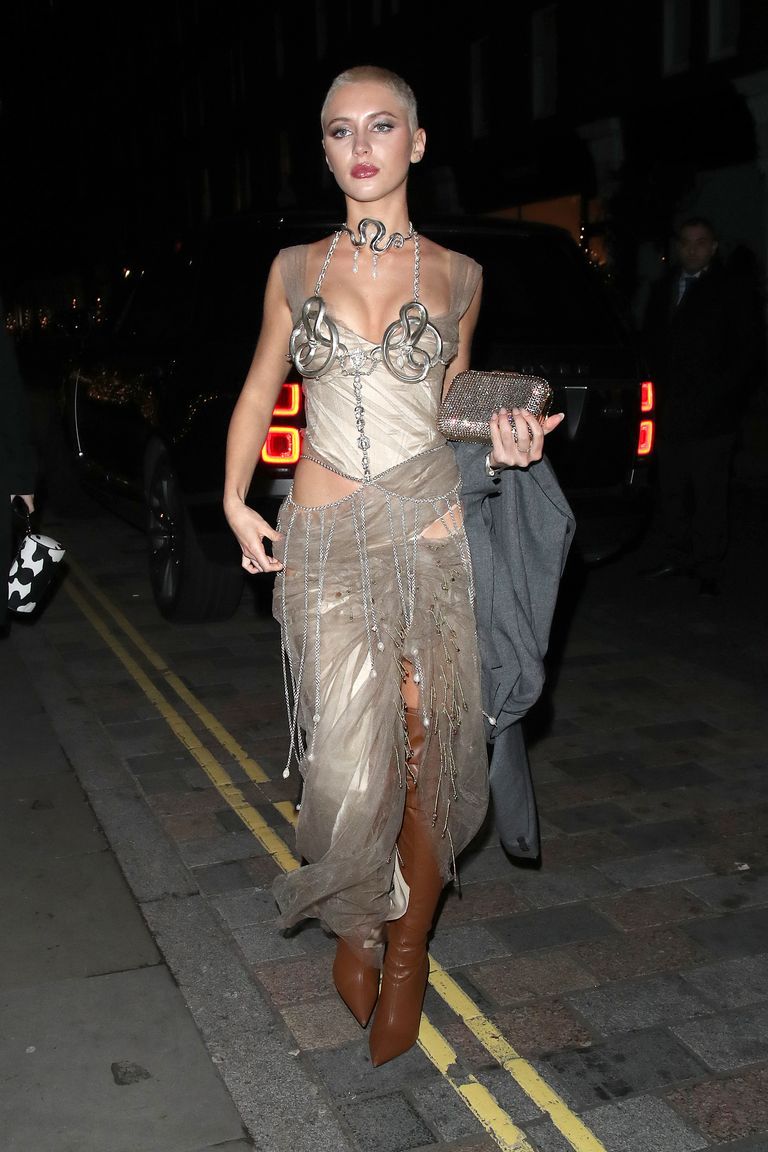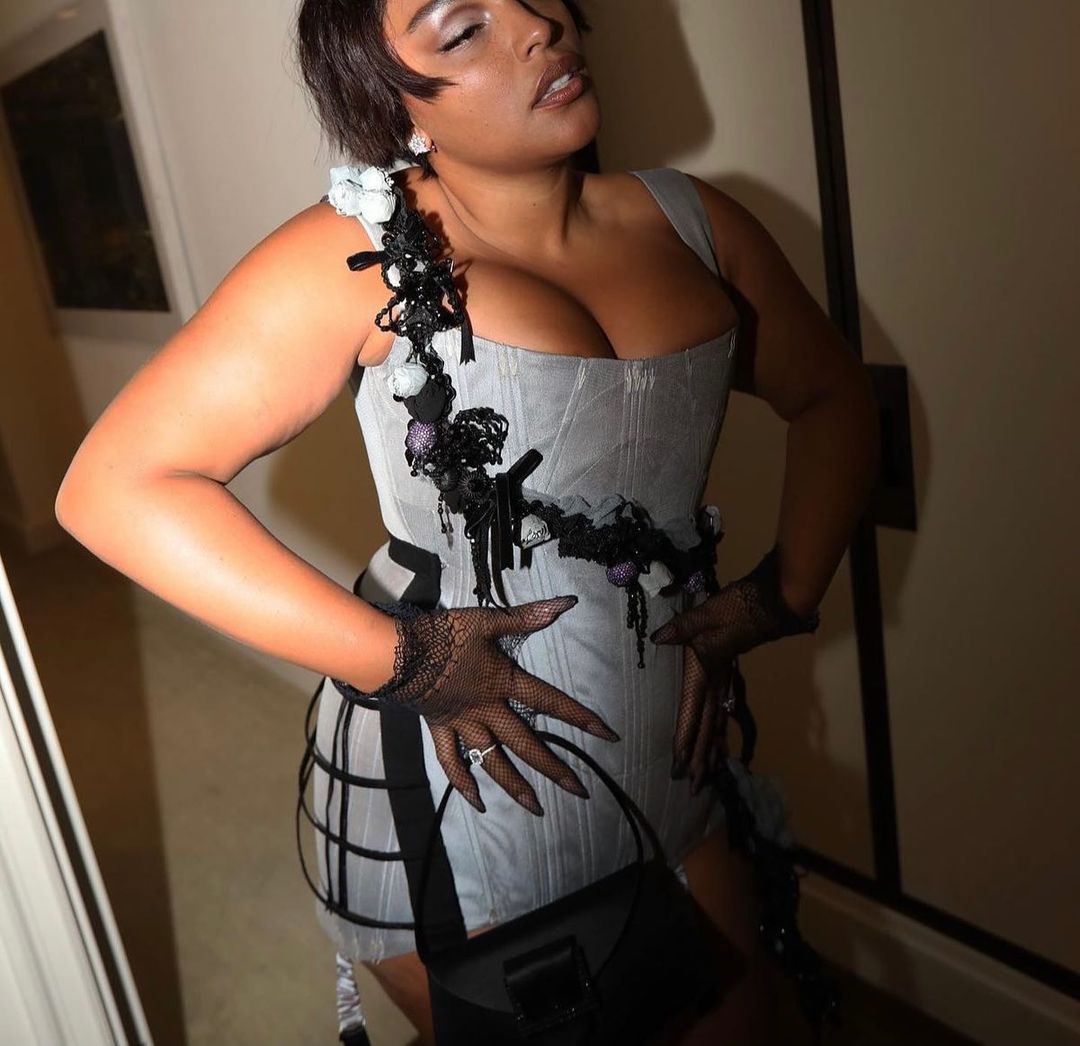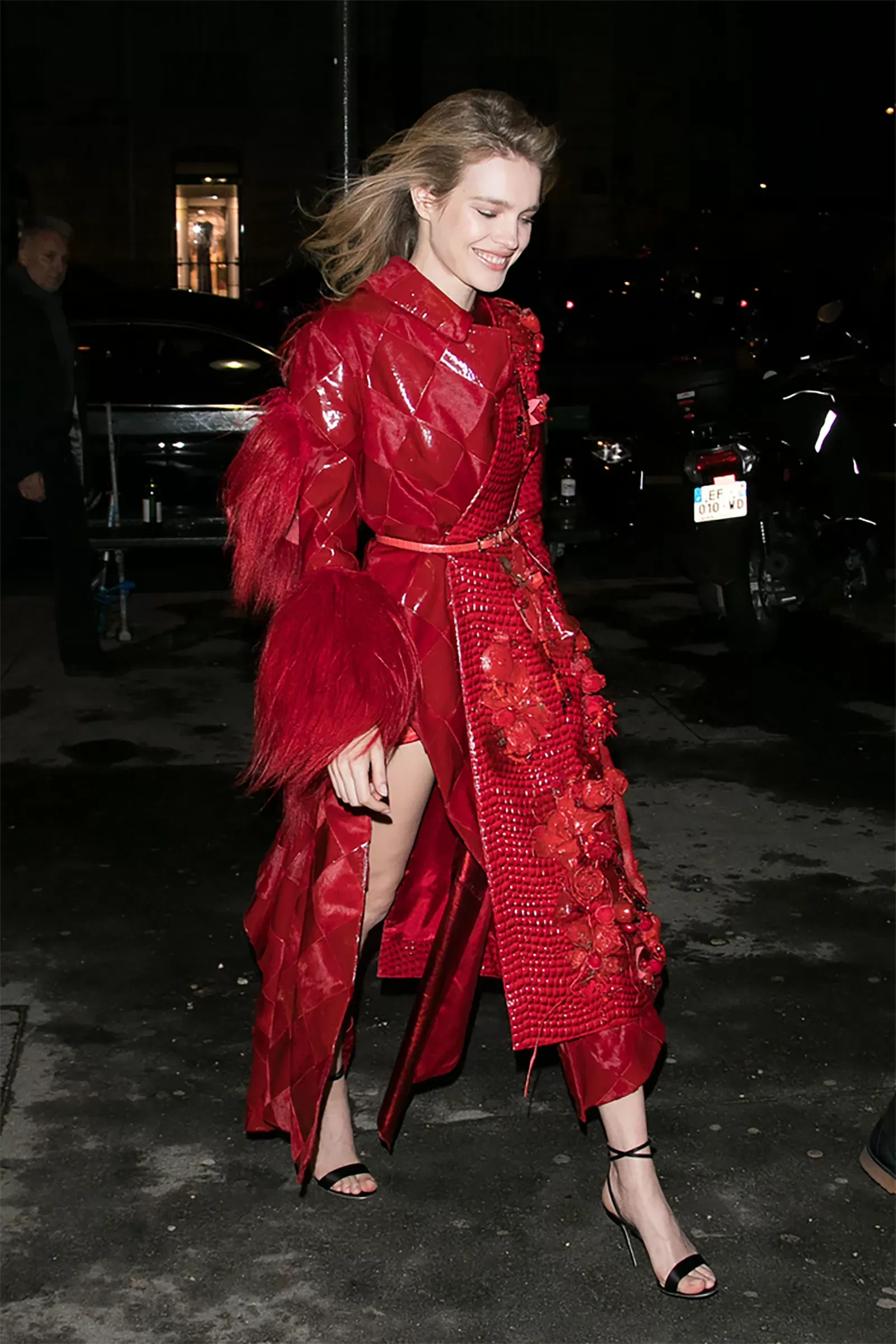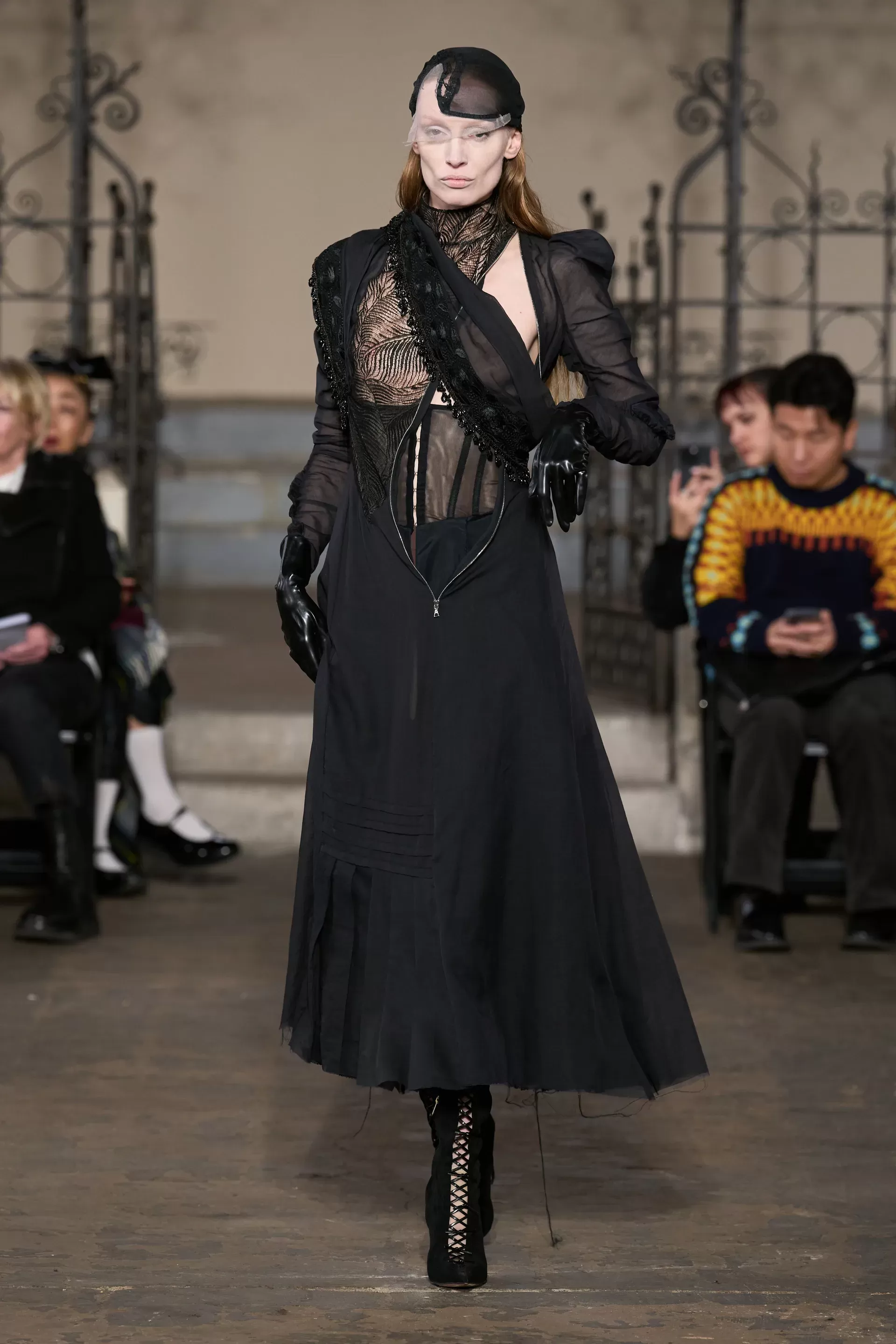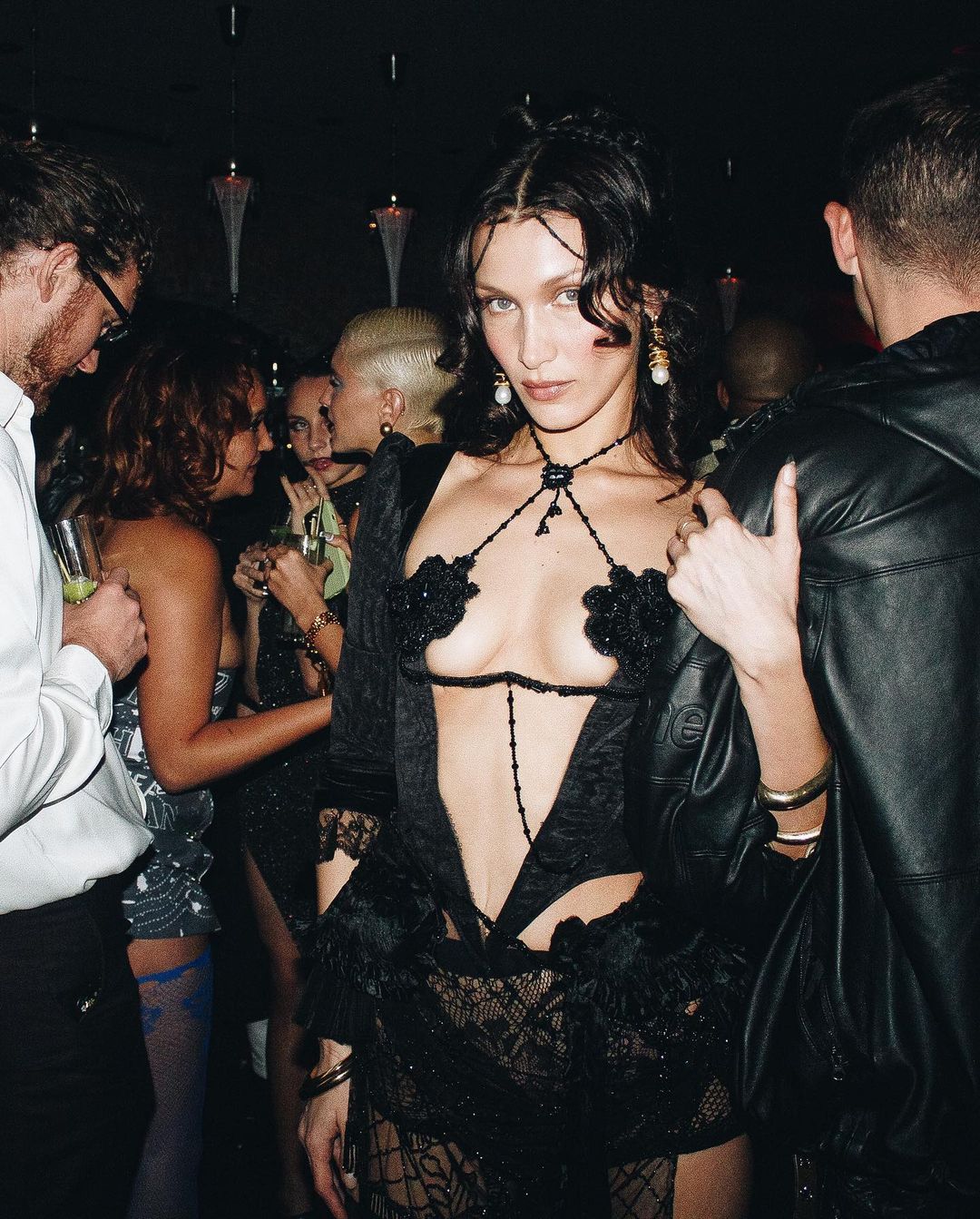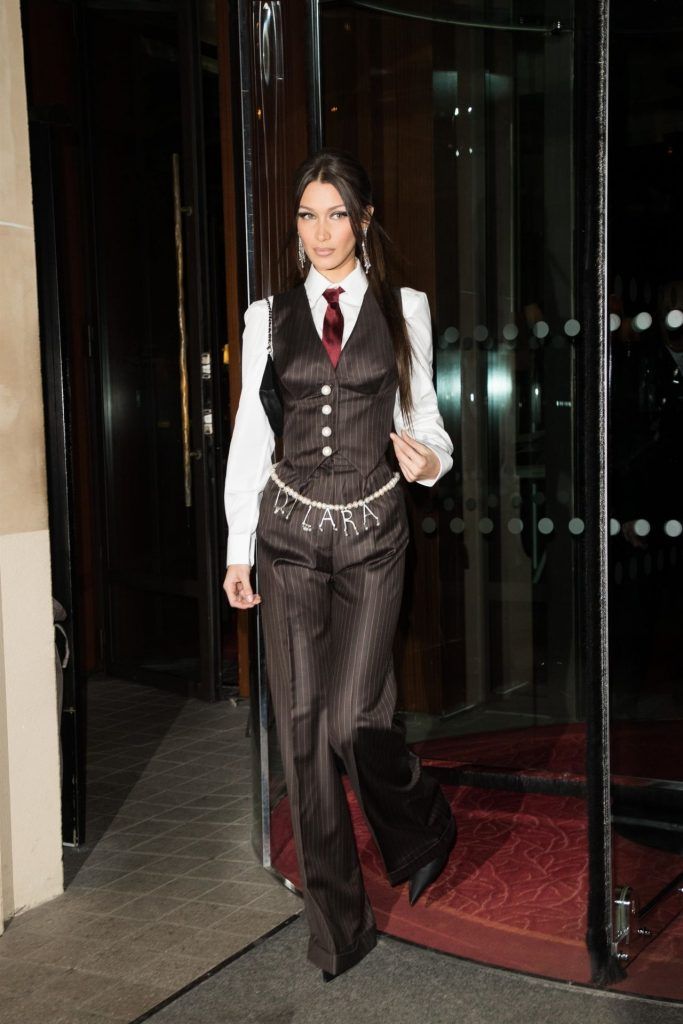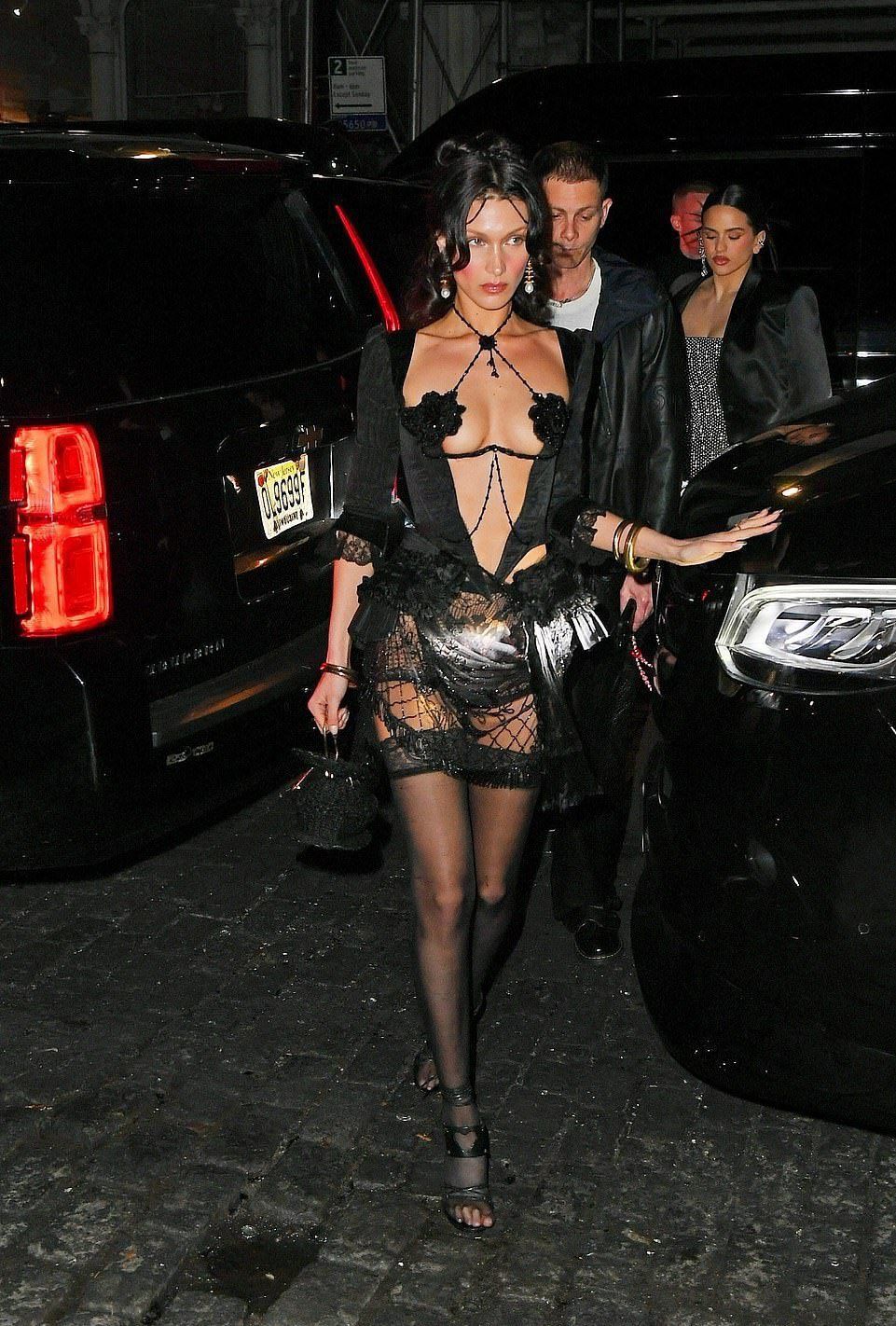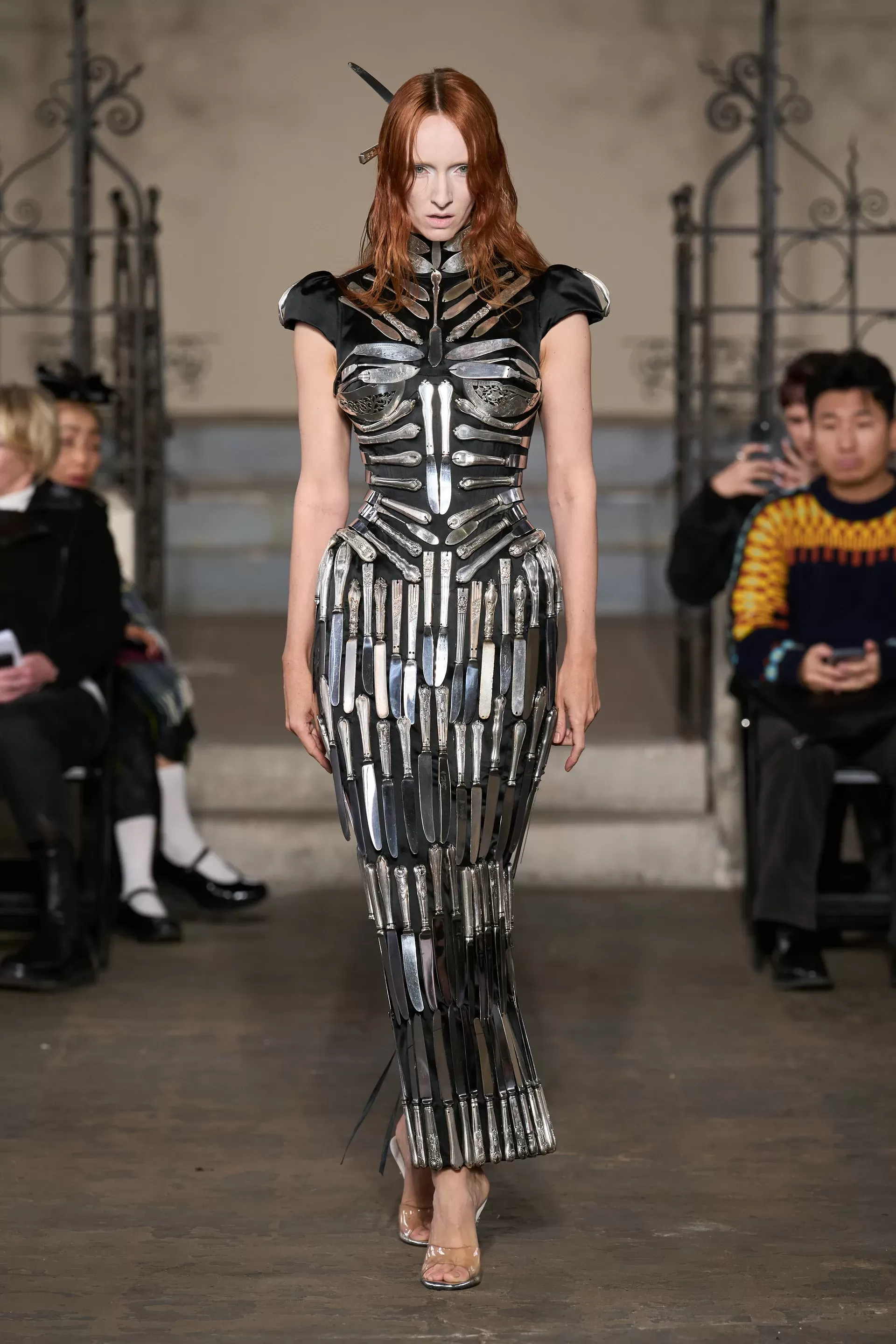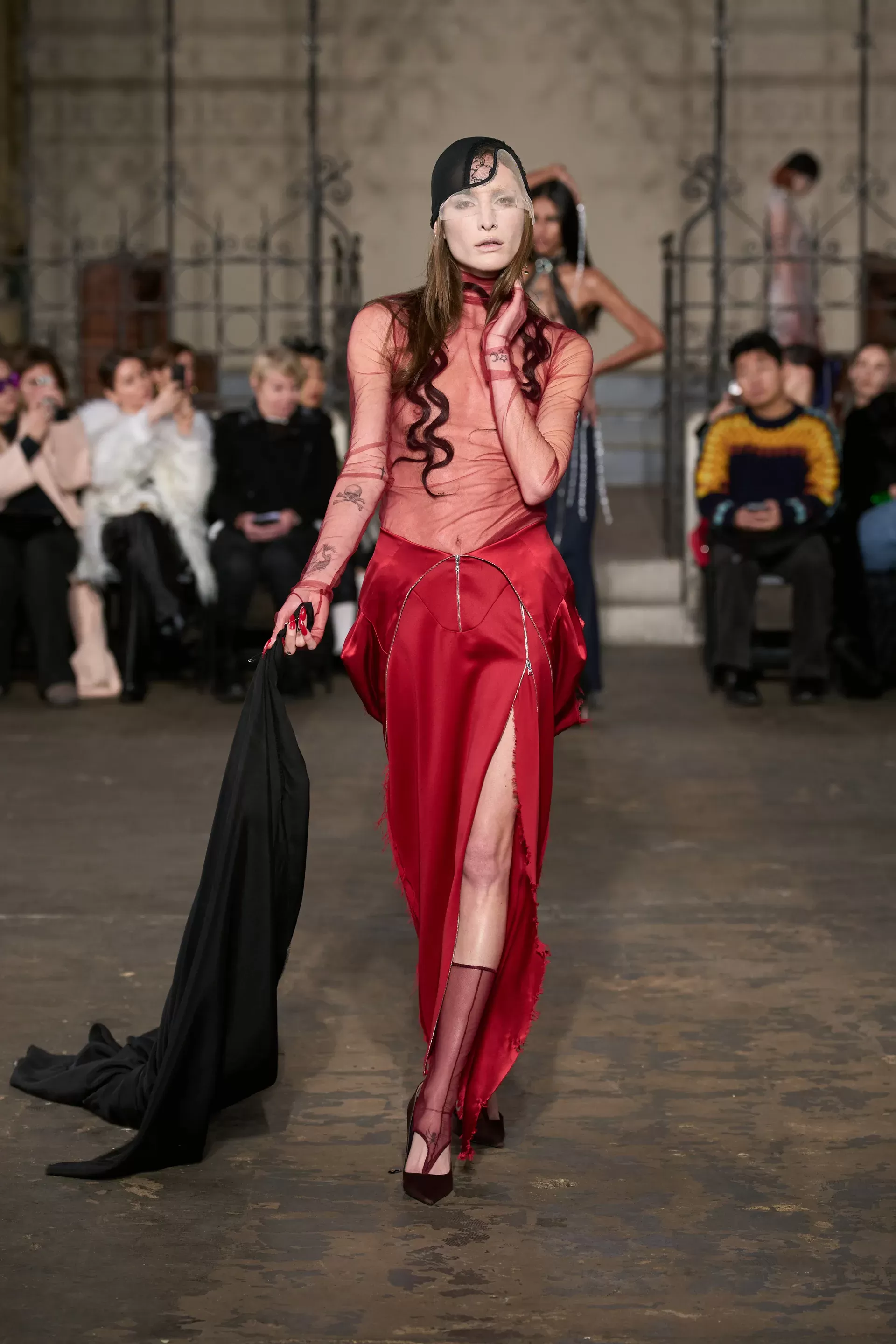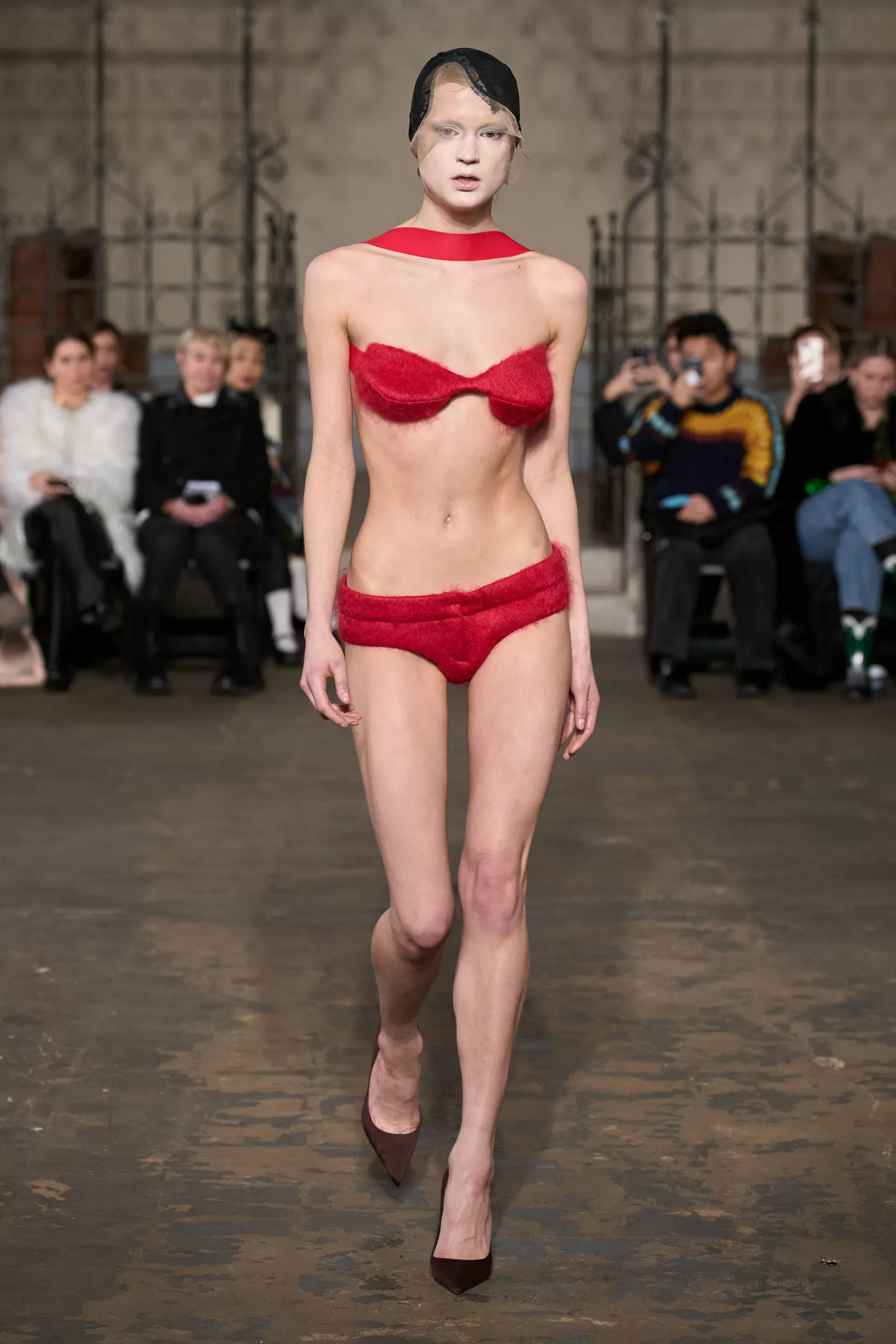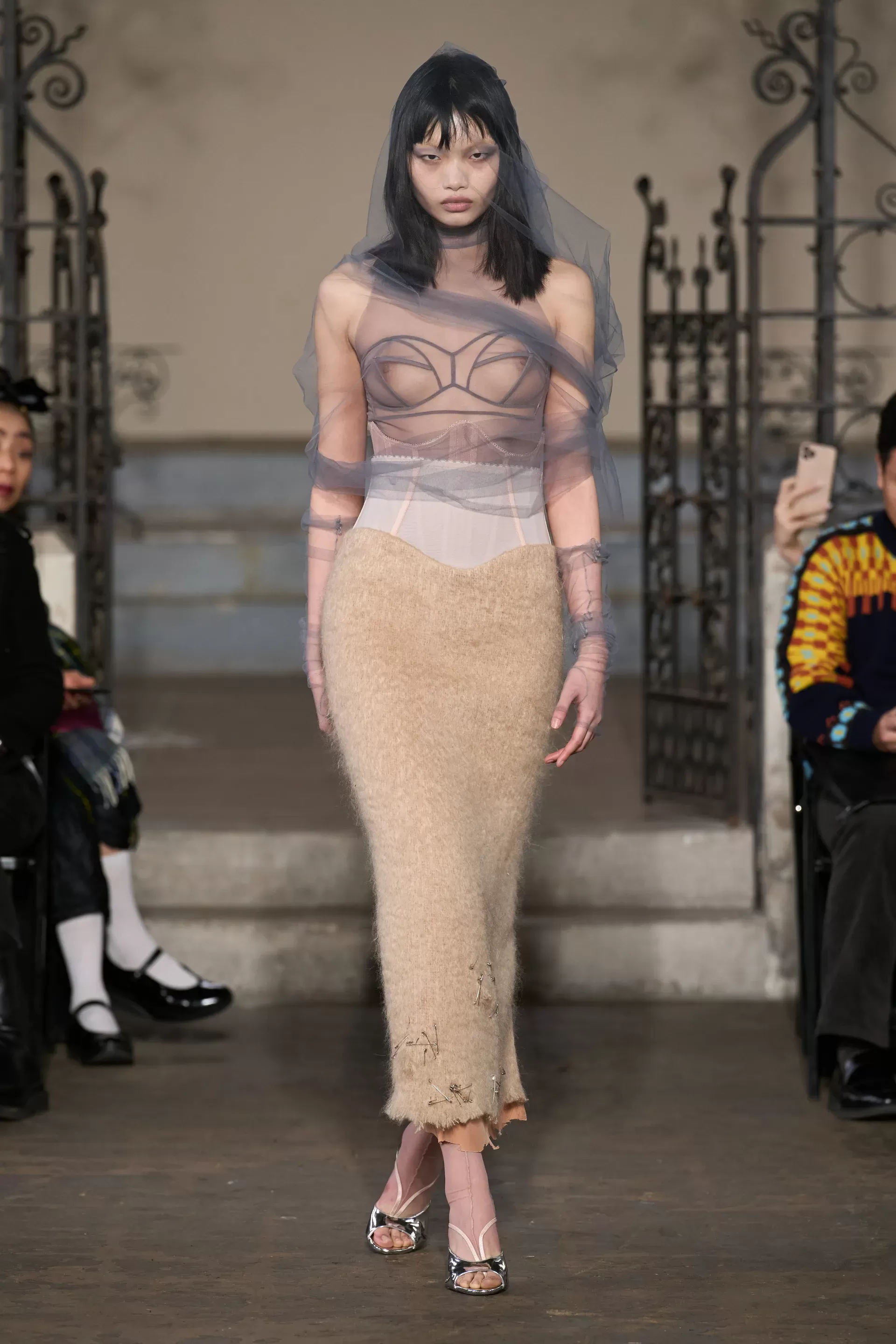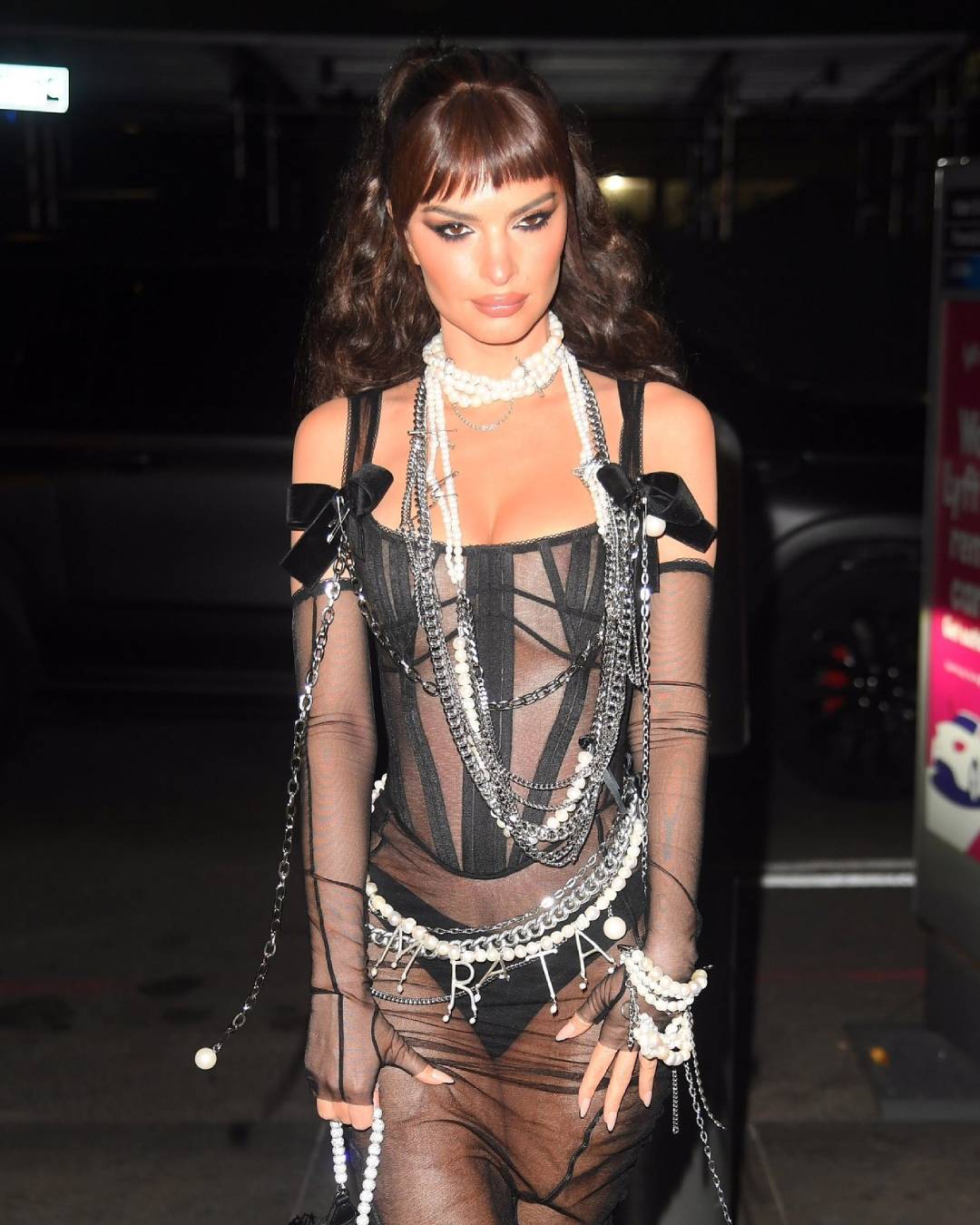
There's something about Dilara Findikoglu From Bella Hadid to Emrata, the it girls have a new favourite designer
From Róisín Pierce's delightful bandage dress for Alexa Chung to Luar's dramatic midnight blue gown for Paloma Elsesser to Harris Reed's pin-up silhouette for Ashley Graham, last year's Met Gala was not only a sometimes goliardic, sometimes moving tribute to the legacy of Karl Lagerfeld, but also a triumph of emerging brands. Among the many wunderkinds who painstakingly took the stage on fashion's most eagerly anticipated red carpet, one of them had the approval of the coolest it-girls of the moment. What do Bella Hadid, Iris Law, FKA Twigs, Lady Gaga and Emily Ratajkowski have in common besides impeccable style curated at great expense by a staff of loyal fans? A passion for the creations of Dilara Findikoglu, the designer chosen by Emrata for the Met's after-party amid seductive transparencies, exposed lingerie and miles of Charleston-style necklaces. Creations that combine Victorianism and burlesque, religious icons and punk feminism, recycled objects and a circus-like flavour, the most deeply rooted subcultures of our century come together in the creations of a designer who shows us how, in a world where everything seems to have been done, surprises are still possible.
Born in Istanbul, Findikoglu studied fashion at London's Central Saint Martins, where she graduated with honours in 2015. However, she was not selected to show her work at the fashion school's end-of-year presentation, to which only a select few were admitted. Nevertheless, she showed her creations, perhaps in an even more scenic way, by staging a guerrilla street show with other students who, like her, had been excluded from the event. This spirit of anarchy deeply informed her fashion shows: the first collection took place in a strip club, the second in a church, in what American conservative radio host Alex Jones, in his outrage, called a 'Satanic orgy'. His eponymous label was launched in 2016 and immediately caught the attention of fashionistas around the world. He soon moved from London Fashion Week to the more famous Paris Fashion Week, winning numerous prestigious awards including the 2017 Fashion Scout Merit Award and selection for the LVMH Prize in the same year. His work has been exhibited in museums and galleries, including the Tate Modern and the Victoria and Albert Museum, and has gained a cult following among underground kids and enterprising celebrities. Lady Gaga called Findikoglu "the designer of the future" and Kanye West commissioned a dress from her for Kim in the early years. Last year, Bella Hadid stunned everyone with her Mata Hari look at the aspiring designer's Met after-party, which consisted of hold-ups, transparencies, a hand-woven Turkish moiré corset and lush beading; Paloma Elsesser wore an equally dramatic pearl grey corset embellished with colourful maxi beads, ruffles and black fishnet gloves and finally, even TikTok star Addison Rae succumbed to the exotic allure of Findikoglu's gowns. It was the baptism of fire, the entry into the Olympus of the mainstream.
But it is now common knowledge that an attractive design is often not enough to stay on the crest of the wave or to convert one's media presence into sales. For Findikoglu, the extra quid is an aesthetic on the border between the sacred and the profane that recalls Islamic influences, and an approach to the body and feminism that bears witness to those who have experienced the most extreme excesses of patriarchy first-hand. It is a message that starts from its origins and becomes a manifesto of the female body, expressed in the creative direction through the choice of artists with similar tastes, as in the case of the campaign for Yorgos Lanthimos' 2021 skimwear campaign, between alienating beaches and couture beachwear. An engaged fashion that also addresses social and political issues. We got a taste of this at the last FW, where the protests in Iran over the assassination of Mahsa Amini set the scene for a fashion show that was both dreamlike and disturbing: «The way they cut their hair in the street really inspired me - says Fındıkoğlu - It was so powerful.» So she took the hair and turned it into bralette tops and bustiers that braided around the breasts and cinched the waist of the belly. The collection, titled Not a Man's Territory, is a call to women who have suffered injustice to claim what is rightfully theirs: themselves.



















































